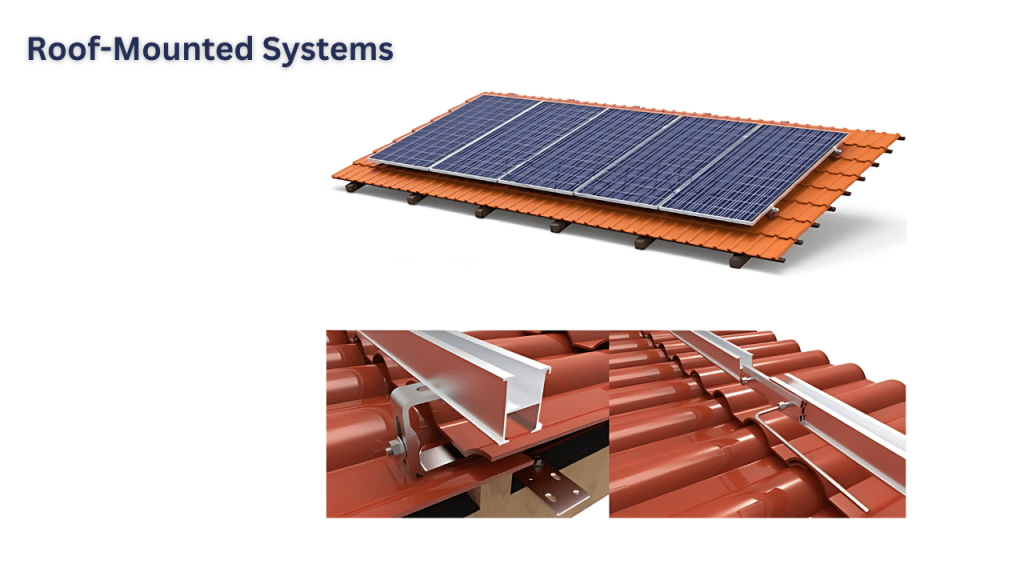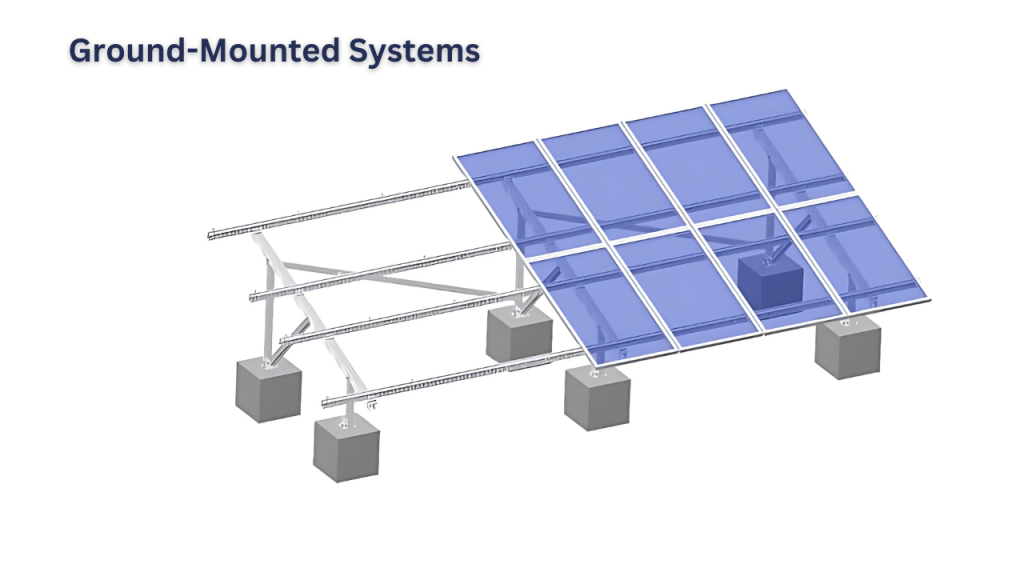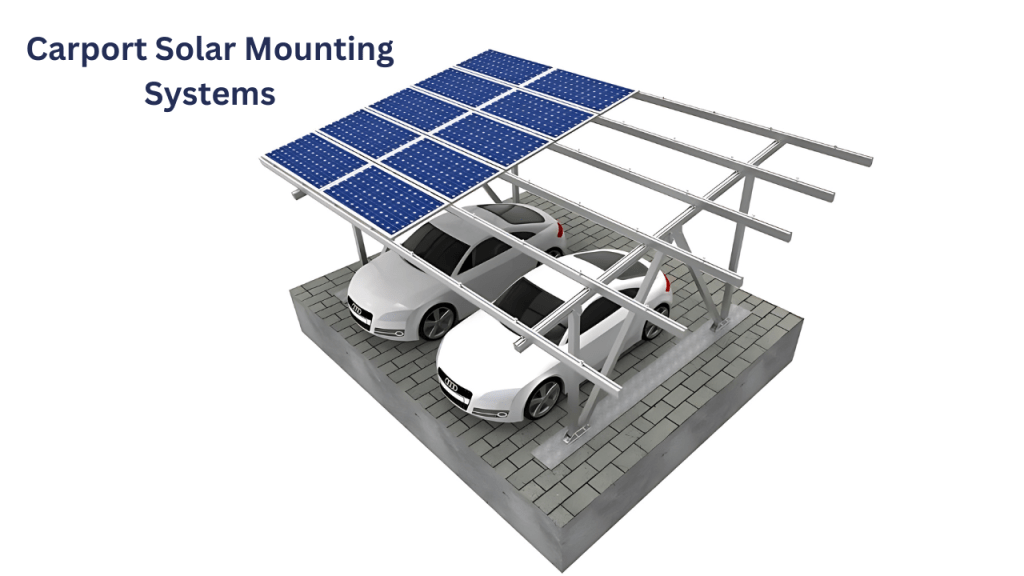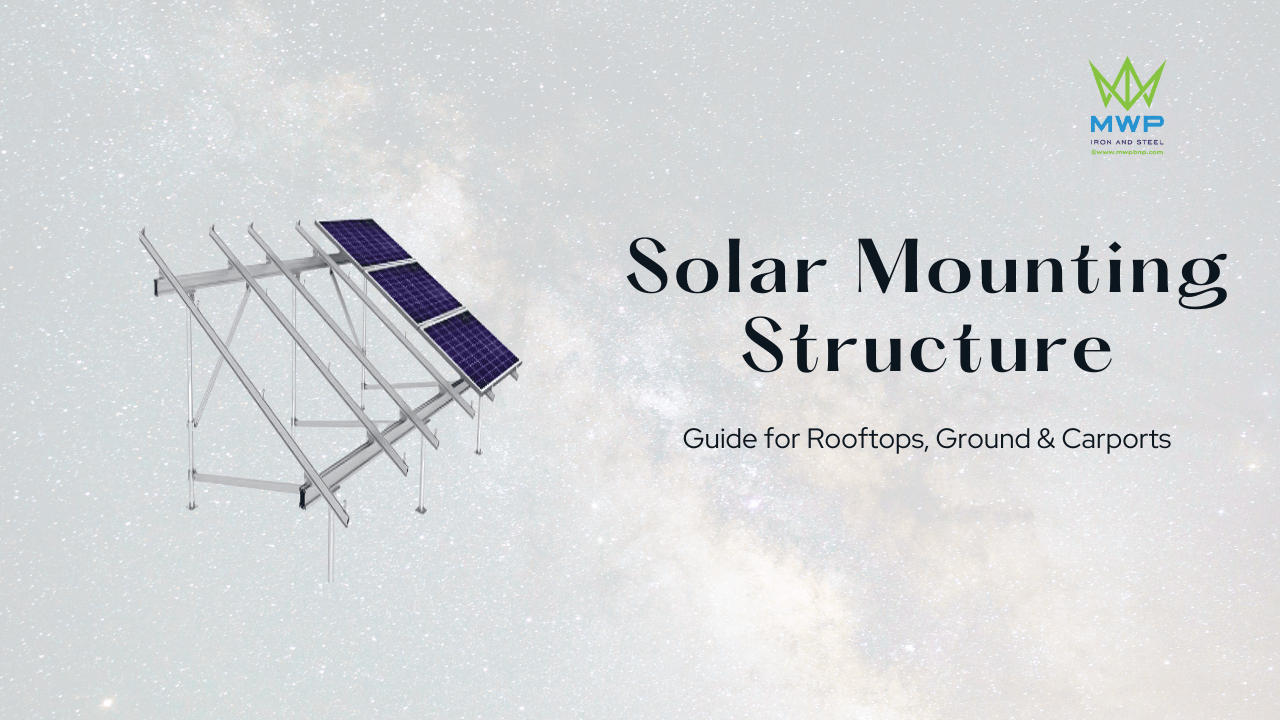Solar Mounting Structure
Harnessing the power of the sun is a responsible and sustainable way to generate clean energy for your home or business. Solar panels are the key components of a solar photovoltaic (PV) system, but they need a secure and reliable mounting structure for optimal performance and longevity. This guide explores the different types of solar mounting structure available, helping you choose the best option for your specific needs.
Why are Solar Mounting Structures Important?
Solar structure plays a crucial role in a solar PV system for several reasons:
- Safety: A robust mounting structure ensures the solar panels are securely fastened and withstand wind, snow, hail, and other weather elements.
- Performance: Proper tilt angle and orientation towards the sun maximize sunlight capture, leading to efficient energy production.
- Durability: Mounting structures are built to last for decades, matching the lifespan of your solar panels.
- Aesthetics: Mounting systems can be designed to complement the architecture of your building.
Factors to Consider When Choosing a Solar Mounting Structure
Before diving into the different types, here are some key factors to consider when choosing a solar mounting structure:
- Roof type: Different structures are suitable for flat roofs, pitched roofs, metal roofs, or composite shingle roofs.
- Number and size of solar panels: The structure needs to accommodate the planned solar array size and weight.
- Local building codes and wind/snow loads: Ensure the structure complies with local regulations and can withstand the expected weather conditions.
- Budget: Mounting structures vary in price depending on material, complexity, and size.
- Aesthetics: Consider the visual impact of the structure on your property.
Types of Solar Mounting Structures
Now that you understand the importance and selection factors, let’s explore the most common types of solar mounting structures:
1. Roof-Mounted Systems
Roof-mounted systems are the most popular choice for residential and some commercial applications. They directly attach to your existing roof and come in various configurations depending on your roof type.
- Tilt-mounted systems: These are adjustable structures that allow you to optimize the tilt angle of your panels for maximum sun exposure throughout the year. This is particularly important in regions with seasonal variations in sunlight.
- Flat roof mounts: These structures elevate the panels above the flat roof surface, creating the ideal tilt angle and ensuring proper airflow and ventilation behind the panels. They are typically made of aluminum or steel and come in various designs.
- Composition shingle roof mounts: These specialized mounts are designed to attach securely to composition shingle roofs without penetrating the underlying shingles. They utilize brackets and flashing kits to ensure weatherproofing.
- Metal roof mounts: Metal roofs require specific mounting solutions that clamp onto the standing seams or ribs of the metal roof without compromising its integrity.

2. Ground-Mounted Systems
Ground-mounted systems are ideal for properties with large, open areas of land not suitable for roof-mounted systems. They offer greater flexibility in panel positioning and are often used for large-scale commercial solar installations.
- Fixed-tilt ground mounts: These are simple and cost-effective structures consisting of posts driven into the ground, supporting a metal framework that holds the solar panels at a fixed tilt angle.
- Ground screw mounts: These innovative systems utilize large screws anchored into the ground to support the mounting structure. They are a good option for areas with rocky or uneven terrain where traditional post-driven installations might be challenging.
- Single-axis tracking systems: These advanced structures allow the panels to rotate along a single axis (usually east-west) throughout the day, following the sun’s path for optimal sunlight capture and increased energy production compared to fixed-tilt systems.

3. Carport Solar Mounting Systems
Carport solar mounting systems combine solar energy generation with car parking functionality. They are ideal for businesses and homeowners with parking areas and a desire to shade their vehicles.
- Freestanding carports: These self-supporting structures consist of posts and a roof framework designed to hold both the solar panels and parked vehicles underneath.
- Building-integrated carports: These carports are attached to an existing building, utilizing the building’s structure for additional support and creating a seamless visual integration.

| Feature | Roof-Mounted | Ground-Mounted | Carport |
|---|---|---|---|
| Installation Location | Roof | Open Land | Parking Area |
| Suitability | Residential & Commercial (limited roof space) | Commercial & Large-Scale Installations | Businesses & Homeowners with Parking |
| Cost | Generally Lower | Moderate | Moderate to High |
| Maintenance | Easier | Requires periodic inspection & cleaning | Requires periodic inspection & cleaning of carports and panels |
| Flexibility in Panel Positioning | Limited | High | Moderate |
Choosing the Right Solar Mounting Structure for You
Once you’ve familiarized yourself with the different types of solar mounting structures, it’s time to choose the one that best suits your needs. Here’s a breakdown to help you decide:
Roof-mounted systems are a great choice if you have a suitable roof with sufficient space and want to maximize your usable property area. They offer a clean and aesthetically pleasing solution for residential applications and some commercial buildings. However, they might not be ideal for flat roofs or roofs with significant shading throughout the day.
Ground-mounted systems provide more flexibility in panel positioning and are suitable for properties with ample open land. They are often the preferred option for large-scale commercial solar installations. However, they require additional land space and might involve more complex installation compared to roof-mounted systems.
Carport solar mounting systems are a perfect solution for businesses and homeowners. Who want to generate solar power while providing covered parking for their vehicles. They offer a practical way to utilize unused space and potentially benefit from government incentives for combined solar and car charging infrastructure. However, carports can be a more expensive option compared to roof-mounted systems.
Additional Considerations:
- Aesthetics: Consider the visual impact of the mounting structure on your property. Discuss different design options with your solar installer to find a solution that complements your building’s architecture.
- Local regulations: Ensure the chosen mounting structure complies with all applicable building codes and zoning requirements in your area.
- Professional installation: Always choose a qualified solar installer with experience in installing the specific type of mounting structure you require. Proper installation is crucial for the safety, performance, and longevity of your solar PV system.
Benefits of Using a Qualified Solar Installer
A qualified solar installer can provide invaluable expertise throughout the process of choosing and installing your solar mounting structure. Here are some key benefits:
- Expert advice: They can assess your property, roof type, and energy needs to recommend the most suitable mounting structure for optimal performance.
- Compliance with regulations: They ensure the installation adheres to all local building codes and safety standards.
- High-quality installation: Experienced installers use proper techniques and ensure the structure is securely fastened and can withstand weather elements.
- Warranty support: Qualified installers often offer warranties on their workmanship, providing peace of mind for your investment.
Conclusion
Choosing the right solar mounting structure is a crucial step in your solar PV system journey. So, by understanding the different types available, considering the factors impacting your choice, and consulting with a qualified solar installer, you can ensure a safe, efficient, and aesthetically pleasing solar power generation solution for your home or business.

